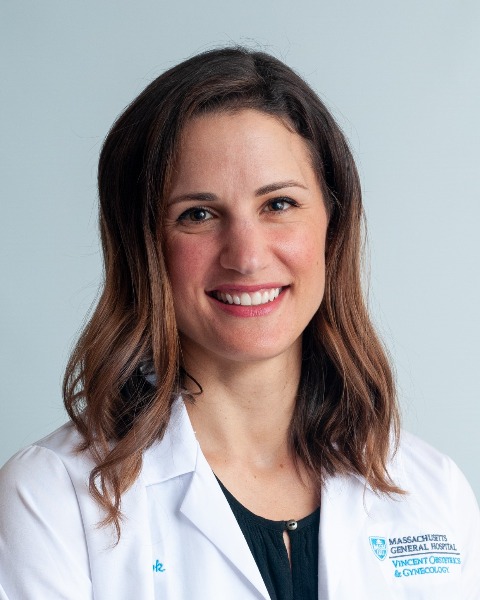Basic Science
Poster Session 4
(1146) Single-cell transcriptomic profiling of Hofbauer cells reveals varied baseline functions and cluster-specific responses to SARS-CoV-2

Lydia Shook, MD (she/her/hers)
Assistant Professor
Massachusetts General Hospital
Boston, MA, United States- RB
Rebecca Batorsky, PhD
Tufts University, Data Intensive Studies Center
Medford, MA, United States - RD
Rose De Guzman, PhD
Massachusetts General Hospital, Department of Obstetrics and Gynecology
Boston, MA, United States - OJ
Olyvia Jasset, BA
Massachusetts General Hospital, Department of Obstetrics and Gynecology
Boston, MA, United States - BG
Brittany Goods, PhD
Dartmouth College, Thayer School of Engineering
Hanover, NH, United States - RP
Roy H. Perlis, MD, MSc
Massachusetts General Hospital, Center for Quantitative Health
Boston, MA, United States 
Andrea G. Edlow, MD, MSc (she/her/hers)
MFM Staff, Principal Investigator
Massachusetts General Hospital
Boston, MA, United States
Primary & Presenting Author(s)
Coauthor(s)
Study Design:
We performed single-cell RNA sequencing (scRNA-seq, 10x Genomics) on placental macrophage suspensions from individuals with SARS-CoV-2 infection during pregnancy (N=4) and uninfected controls (N=8). Graph-based clustering was performed to identify cell types based on marker gene expression. To characterize unique functions of HBC clusters, Gene ontology (GO) pathway analysis of top marker genes was performed (log fold-change >0.25, Benjamini-Hochberg (BH) p< 0.05). Differentially expressed genes (DEGs) by SARS-CoV-2 status were identified (BH-p < 0.05), and Ingenuity Pathway Analysis (IPA) was used to predict signaling pathways dysregulated by SARS-CoV-2.
Results:
31,719 high-quality cells were identified as macrophages. 8 HBC clusters were identified by expression of distinct marker genes; GO analysis of marker genes revealed variable enrichment in pathways involved in immune, metabolic, angiogenesis, and cellular stress responses by cluster (Fig. 1A). Number of DEGs by SARS-CoV-2 status was highest in clusters HBC0-3 and HBC5. IPA analysis of DEGs by SARS-CoV-2 reveals upregulation of pro-inflammatory responses and phagocytic pathways in two HBC clusters (0, 3) and downregulation in three (1, 2, 5). Pathways involved in T-cell communication are upregulated in HBC 0 in SARS-CoV-2, whereas in HBC 1, metabolic processes are upregulated and innate immune pathways are downregulated (Fig. 1B).
Conclusion: ScRNA-seq reveals varied gene programs in HBC subclusters at baseline and differences in response to maternal infection with SARS-CoV-2, with unique clusters engaged in both pro- and anti-inflammatory functions. These data can inform future studies of mechanisms underlying fetoplacental programming in response to maternal viral infection.


